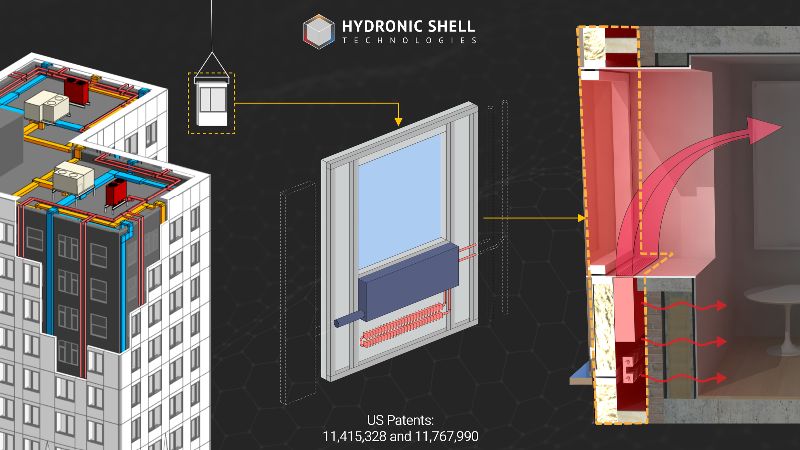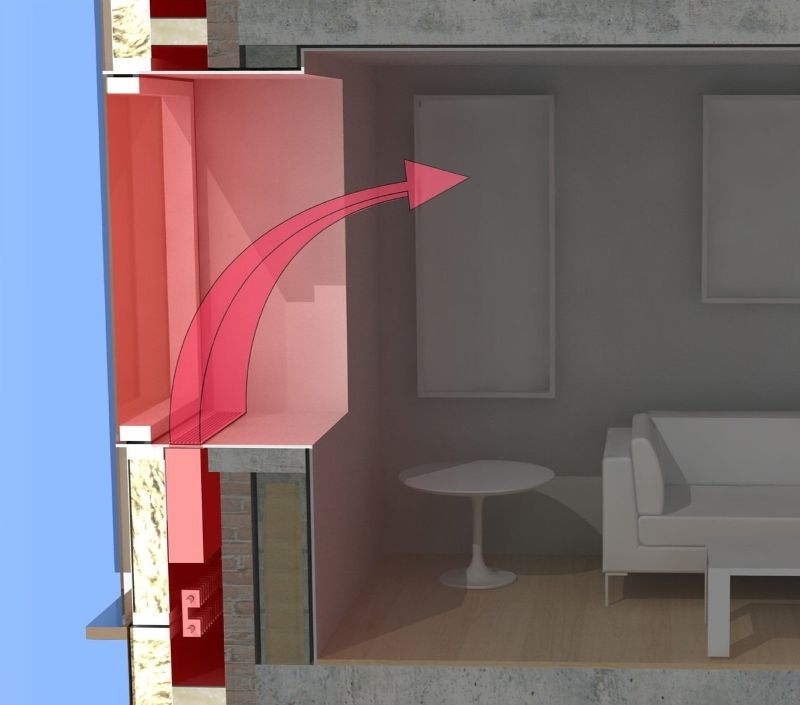

Apartment buildings are set to be retrofitted with insulated, heated, cooled, and ventilated modular facade panels to reduce the buildings’ carbon footprint.
Located in New York City, Hydronic Shell Technologies, has unveiled their novel approach to improving the energy efficiency of older apartment buildings. Their innovative solution involves modular façade panels that can be easily attached to the exteriors of buildings, providing insulation, heating, cooling, and ventilation without any disruption to residents.
The challenge of retrofitting existing buildings to enhance energy efficiency has long been a significant obstacle in reducing global emissions. Most older buildings are often inadequately equipped for efficient heating and cooling, and retrofitting these structures traditionally involves complex and expensive processes.

This intriguing solution developed by Hydronic Shell Technologies may well simply the entire process. The start-up company specialises in prefabricated modular façade panels designed to retrofit to old apartment buildings.
The concept was developed by David Goldstein, an engineer and the founder of Hydronic Shell Technologies. His idea was sparked by New York City’s 2019 mandate for large buildings to reduce energy usage. Goldstein, drawing on his experience with a project aimed at decarbonising a multifamily building, recognised the economic and logistical challenges inherent in retrofitting occupied buildings.

Goldstein’s innovative design involves a modular façade panel that acts like an insulating blanket, which can also be heated. This approach is particularly effective in older buildings that typically lack internal insulation. The design utilises a system of pipes running hot water for heating and cool water for cooling purposes. It also encompasses the replacement of old windows with new, more efficient ones, and incorporates built-in ventilation to improve air quality. This element of the modular panel’s design, when fitted to older buildings that lack comprehensive HVAC systems, can address health issues from mould prevention to filtering pollution.
Watch their story
The design appears to be simple and practical, using existing equipment and construction methods but applying them in a novel configuration. According to company sources, retrofitting these modular façade panels can potentially reduce energy usage by over 90% in buildings with poor insulation and old windows. The energy savings are delivered through the insulated modular facades and the possibility of integrating the system with efficient heat pumps or other technologies, such as geothermal heating.
The company plans to collaborate with financial partners to provide building owners with construction loans. These loans are expected to be offset by the savings on energy bills, making the proposition financially attractive for building owners.

The pilot project for their modular façade panels is scheduled for early next year, focusing on a seven-storey low-income apartment building in Syracuse, New York.
Community engagement is a key aspect of the project, with the design of the modular facades being influenced by local preferences. The process starts with a drone taking a 3D scan of the building, which informs the computer-generated design of the facade and system layout. The company aims to make the production process as efficient as possible, with cranes installing about 6 to 10 panels per day.
With an estimated 1 million buildings in New York City alone needing retrofitting to meet net-zero targets by 2050, the scale of the challenge is immense.
Source: Fastcompany